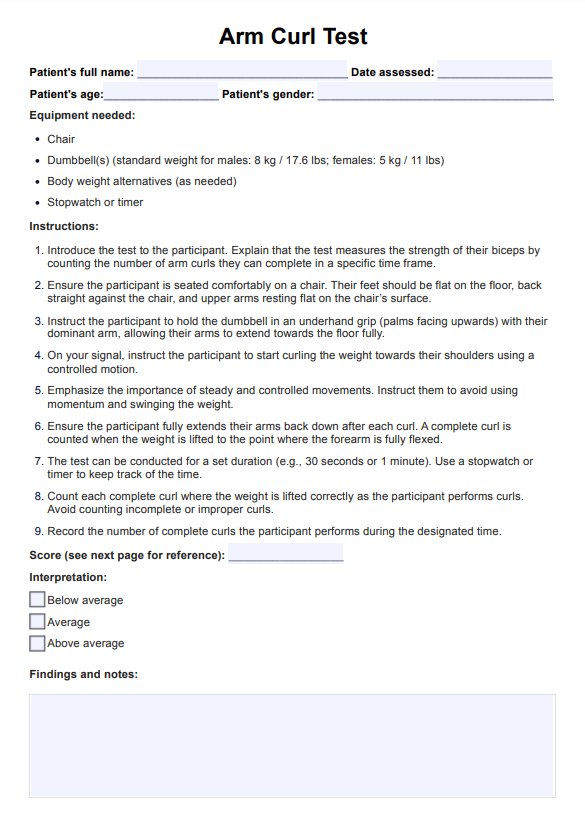The Arm Curl Test is commonly used to assess arm muscle endurance and upper body strength in adults of various age groups. It can also track changes in these areas over time, making it a valuable test for fitness professionals and physical therapists.

Arm Curl Test
Learn to conduct the Arm Curl Test to assess upper body strength and arm muscle endurance. Download a free PDF and example now!
Arm Curl Test Template
Commonly asked questions
The Arm Curl Test involves performing as many repetitions of an arm curl exercise as possible within a set period. The test is typically 30 seconds but can be extended to 60 seconds for individuals with higher levels of fitness or training.
To perform the Arm Curl Test, you will need a chair and a dumbbell or other weight appropriate for your patient's fitness level. The patient sits in the chair with their back straight and feet flat on the ground. They then hold the weight in their dominant hand and perform as many arm curls as possible within the designated period, ensuring their elbow flexors are fully extended at the bottom of each repetition.
EHR and practice management software
Get started for free
*No credit card required
Free
$0/usd
Unlimited clients
Telehealth
1GB of storage
Client portal text
Automated billing and online payments











